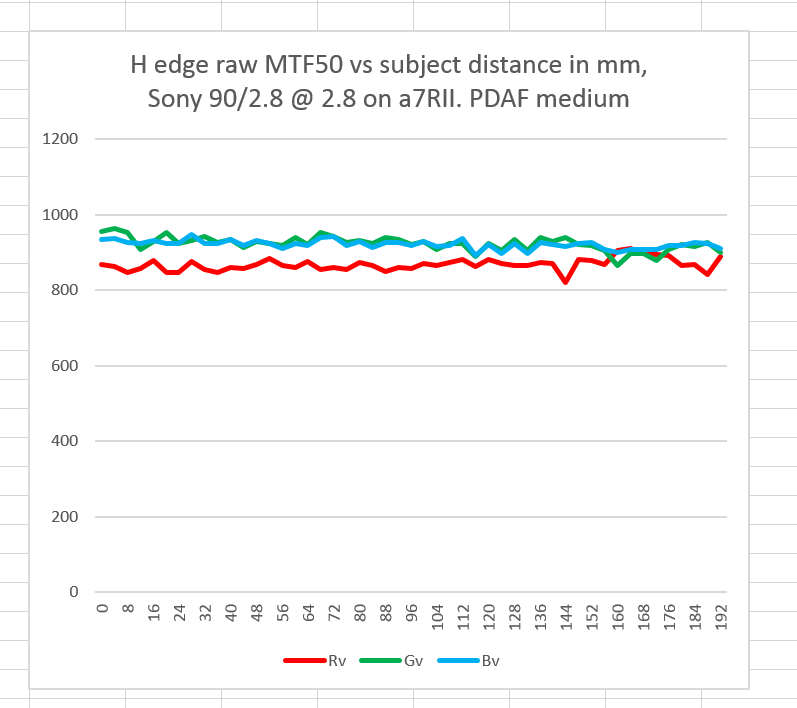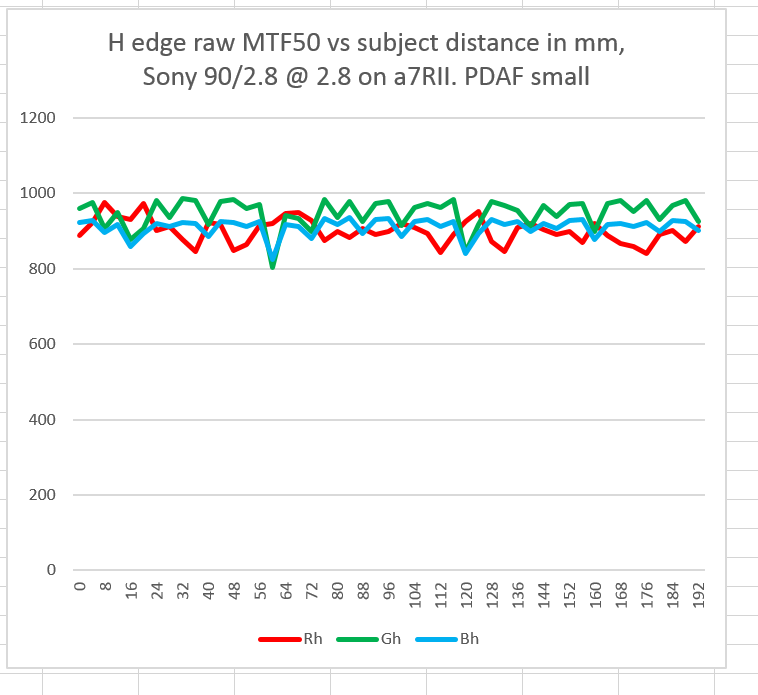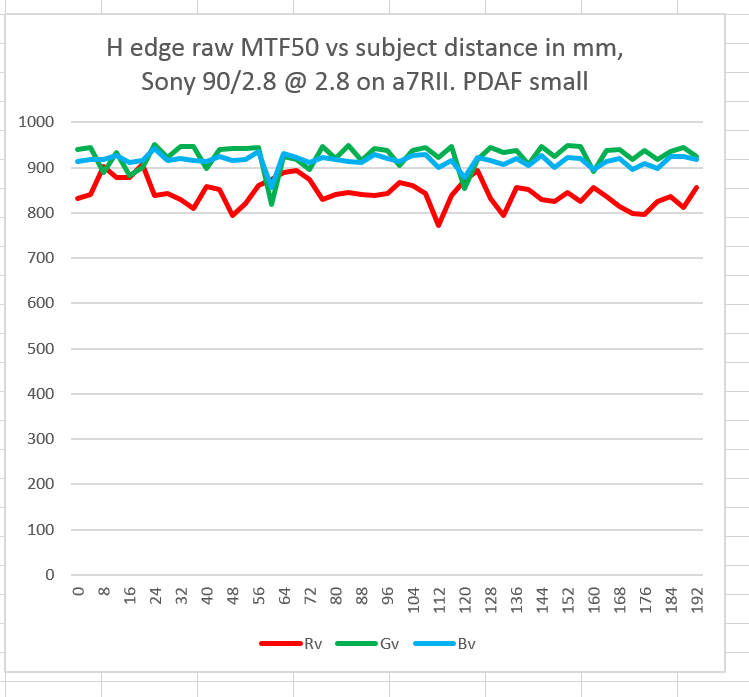This is a continuation of a test of the following lenses on the Sony a7RII:
- Zeiss 85mm f/1.8 Batis.
- Zeiss 85mm f/1.4 Otus.
- Leica 90mm f/2 Apo Summicron-M ASPH.
- AF-S Nikkor 85mm f/1.4 G.
- Sony 90mm f/2.8 FE Macro.
The test starts here.
Yesterday I reported on the curious behavior of the Batis 85/1.8 on the Sony a7RII when used with phase detection autofocus (PDAF), where the camera appeared to optimize the focus of the red raw channel to the exclusion of the other two channels. The day before, we saw that CDAF did the same thing.
There is one other E-mount AF lens in this test, the Cony 90/2.8 macro. Does it do the same thing?
I lit a slanted-edge target with two Westcott LED panels, and set the color temperature to 5000K. The target has a medium-contrast Siemens star in the center, which I used for both manual and automatic focusing.
I mounted a Sony a7RII to the Cognisys computer-driven focusing rail. I set the controller up to use 192mm of travel and make 49 exposures 4mm apart. I set the assembly 8 feet from the on-axis target, mounted the lens, focused a little short of mid-rail using manual focusing, and focused on the star using AF-S with flexible spot, PDAF on, AF priority. I used two spot sizes, small and medium. I exposed 49-shot series with the lens wide open. I used Jack Hogan’s Matlab program, MTF Mapper, and DCRAW to pick the horizontal edges and calculate the MTF50s for the raw color planes, imported the data into Excel, and plotted the results in cycles per picture height vs subject distance change (note: not image distance change, which is what I used yesterday).
The manually focused series results using the horizontal edge, which is what I’ve been reporting on recently, aince the vertical edges with the Batis and most other lenses yield the same curves as the horizontal one:
In the case of the Sony macro, there is a lack of complete isotropy.
Here’s the plot for the vertical edge:
Not much of a difference, but you’ll see why I showed you that curve set in a moment. Note that there is not nearly as much LoCA in relation to the overall shape of the curves with the Sony as with the Batis at a similar stop. That is partially because there is actually less displacement of the raw channel planes of best focus, and partially becasue the Sony is not as sharp at f/2.8 as the Batis, and thus its curves are broader.
Turning on AF and setting the spot size to medium:
We don’t see a preference for any color plane in the horizontal edge chart, and the MTF50 numbers indicate that the lens is focusing between the peaks on the manual focus curves, which is about all you can wish for.
In the vertical edge curve, there is a slight preference for the green and blue planes over the red one. This is exactly the opposite of what we saw with the Batis, although the differences are less with the Sony 90.
With the spot size set to small:
There’s more noise in the results, indicating that focusing with the small spot is not as consistent as with the medium one, but otherwise the curves are similar.
What’s it all mean? I think I’m going to have to test some more lenses to fins out.






Leave a Reply